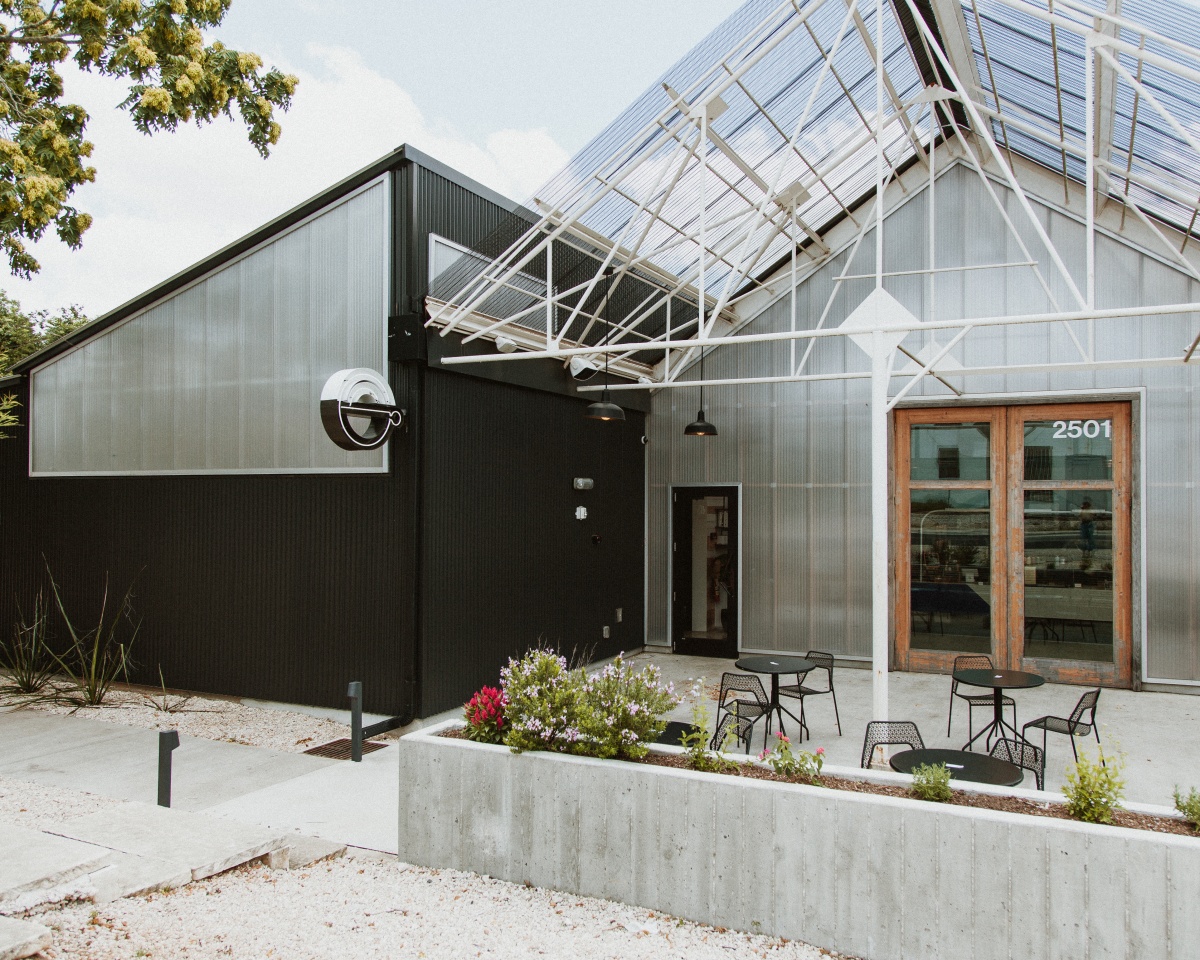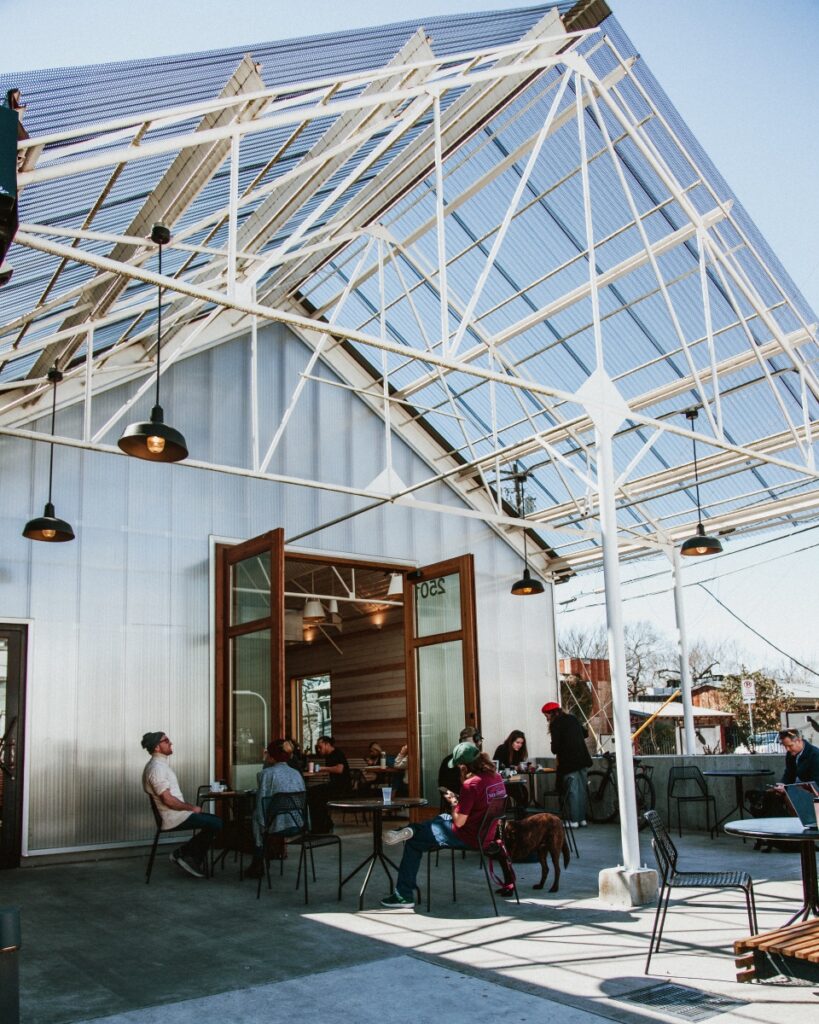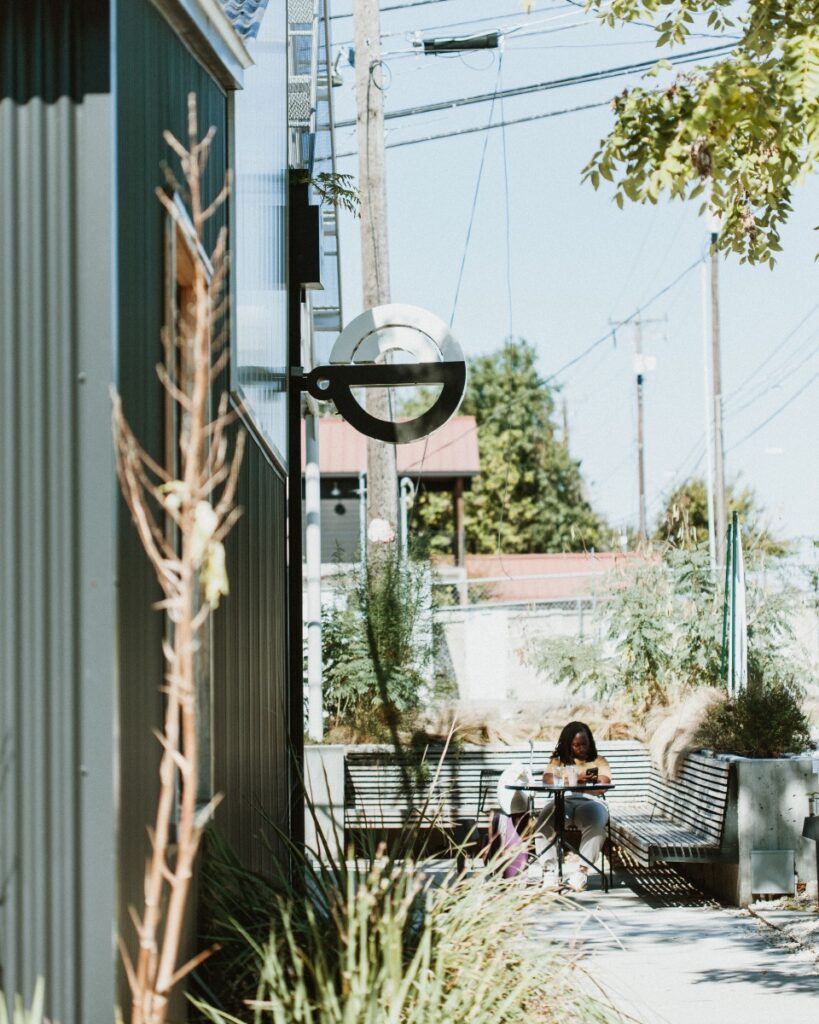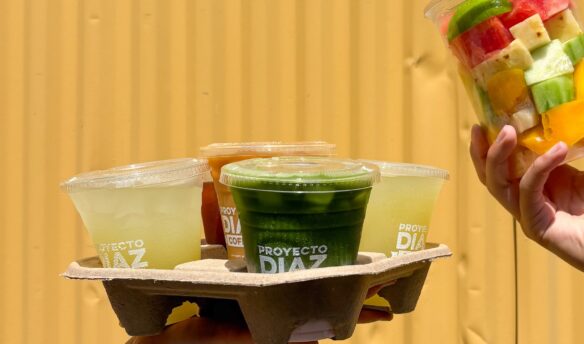Have you been thinking about adding outdoor seating to your cafe? A thoughtful patio design can enhance your brand and draw in new customers.
Whether you hire someone or go about the design yourself, the process is the same. Between research and interviews, I’ve assembled a solid list of tips to pay attention to while you’re working on that design.
Parklet or Patio or Private Outdoor Dining Space
First and foremost, know what you’re building because it’ll decide how you go about it. New York artist Gordon Matta-Clark envisioned the “parklet” concept in the early 1970s with his project “Odd Lots” and a San Francisco guerilla art project made it a reality in 2005. Since then, the city formalized the program—turning unused street space into public space—and many cities around the world soon followed. Here in SF, parklets may be designated as public spaces, so you need to work with the city. But luckily, there’s a handy manual for this (other cities have their own, too).
“We approached the parklet project keeping in mind that it is first and foremost a space for the community—everyone that interacts with the parklet is community,” says James Wong, managing owner of Breadbelly in San Francisco. The cafe is not only one of my favorites, but it also has a beautiful parklet that offers a variety of seating arrangements. Breadbelly is responsible for maintaining the parklet and its customers are able to use it during operating hours. Wong says the design process “always revolved around how the space would be utilized during open cafe hours and off-hours.”
Patios and other private outdoor seating options usually have different permit requirements, so it’s highly recommended to do your research before you go too deep in the design process.
Have a Vision
“The biggest thing is just knowing your vision, being as practical as possible, then un derstanding who your demographic is,” advises Khanh Trang, founder of Texas-based Greater Goods Coffee. Everyone wants to be in a design magazine, but at the end of the day, you need to design with your customers in mind.
Trang worked with Austin architecture firm Michael Hsu Office of Architecture for Greater Goods’ patio. “It was a visioning, where we worked with their existing branding that they had already developed as a roaster and translated that into architecture,” says Jay Colombo, a partner at the firm. He recommends that a design “amplify what is indoors. There shouldn’t be much difference between the interior character and the exterior character.” The overall cafe should be “one design voice,” and the “narrative should carry through” to the outdoor space.
Hire A Designer
If the thought of having to design plans, juggle contractors, and secure permits makes your eyes cross, then you might be better off working with a designer.
“When we tried to do it on our own, it was still as costly and it was a lot more stressful,” says Trang. She advocates for working with a designer “because they’re the ones who help you bid out to your contractors and help you stay on budget. They actually go to bat for you.”
When researching design partners, Colombo recommends interviewing a number of people. He says, “You want to pick somebody that speaks your language, who can really talk about your brand in a thoughtful way.” If they don’t believe in your narrative and you can’t be open about what you want, then it’ll be a difficult working relationship.
Add More Time and Money to Your Budget
If you’ve gone about a build out your own before, then you’re probably already familiar with this tip.
“Add 10% and a few months for a delay,” says Trang about budgeting for money and time. “You never know the can of worms that are going open up while you’re re modeling.” The cafe’s location was originally a tow yard, and the structural engineers found that the foundation wasn’t put in properly. “It was just a piece of cement floating on earth,” she says. This surprising discovery and permit delays set the build back quite a bit.
Pick the Right Materials
Hand-in-hand with knowing the weather your outdoor space needs to be compatible with, the materials you use are going to make a big difference in both the look and maintenance of the space.
Colombo’s firm appreciates the tactile nature and unique aging of wood. He says, “Even though it may not last nearly as long, it’s more satisfying and it feels a little more comfortable than sitting on a concrete back or a steel chair.”
This being said, consider how much maintenance you want to do. If you want a low-maintenance, perfect-on-day-100-as-on-day-one kind of patio, then concrete and steel for furniture (with shade and cushions!) are better for you. Otherwise, the wood will need resealing, and you may need to close the cafe for this.
“It’s a lot of financial consideration: upsetting the customers, having to shut down, having to pay our staff for lost hours,” says Trang. “And then trying to forecast and make sure that our contractors are really able to do everything in the timeframe they said.”
Offer a Variety of Seating Options
Unless it’s a simple parklet that only offers benches, seating options matter. You’ll be hosting groups of various sizes outside, which means you need some flexibility in the seating arrangements.
One of Wong’s favorite aspects of Breadbelly’s parklet design is “the different seating areas and small details in the woodwork. In addition to movable tables and chairs, it incorporates “herringbone corners, floating benches, stadium seating, and planters/plants.”
Make Space & Add Greenery
I’m not writing this tip only because I’m an avid plant parent—having breathing room in the patio works on multiple levels, pandemic safety included. Research also shows that having greenery around us reduces stress, improves mental health, and boosts creativity.
Colombo says that greenery and vegetation help provide shade, soften the space, and with the dabbling of the light, makes it more dynamic to be in. You also don’t want to overcrowd the patio. “Don’t try to cram every little cafe table or chair into it,” he says. “A really good patio has a lot of air movement; it just feels open and connect ed to the outdoors.”
Building an outdoor dining space for your customers to enjoy can be a daunting process. Hopefully, these tips have armed you with the knowledge you need to create your own design or work with a designer. And if you’re still completely lost, look to your current branding or interior space for inspiration.
All photos courtesy of Greater Goods.
Jenn Chen is a San Francisco-based coffee marketer, writer, and photographer. She advises specialty coffee businesses and organizations on digital marketing strategies from voice to social media to how to complement a physical presence with a digital one. When she is not working, you can find her with chips in one hand and holding her dog Zoey in another. You can connect with her at jennchen.com or on social media @thejennchen.


















